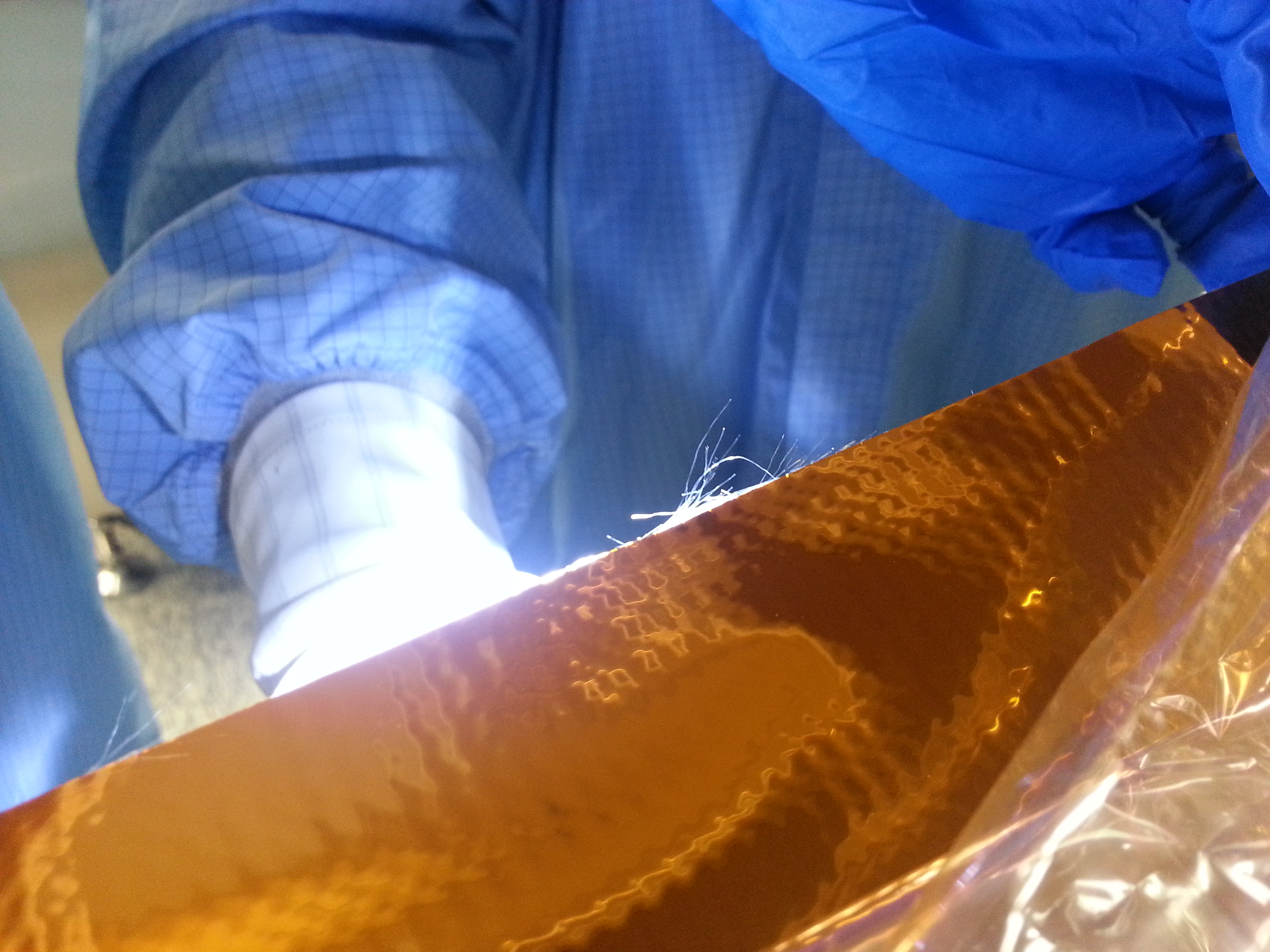20141217 Status of Gaia straylight analysis - Gaia
Status of the Gaia straylight analysis and mitigation actions |
||
|
During commissioning of the spacecraft it was found that the sky background observed by Gaia is significantly higher than expected. In the past months, this issue has been investigated by an independent team involving experts from ESA, industry and the Data Processing and Analysis Consortium (DPAC). A multi-disciplinary approach has been adopted, including different kinds of analysis: experimental (background estimation as function of CCD, time, and Solar aspect angle), theoretical (diffraction assessment), laboratory (determination of scattering properties of the Sun shield material), and modelling (straylight ray-tracing simulations). Following these investigations, it is now clear that the straylight is caused by two sources: the Sun and bright objects in the sky, most notably the Milky Way. |
||
|
A flight-spare blanket of the Gaia sun shield lit with a torch from the back to enhance the effect of scattered light from fibres protruding from the edge. |
||
|
The straylight primarily affects the performance of Gaia for the faintest objects, in particular in the Radial Velocity Spectrometer (RVS). Mitigation schemes are being implemented to optimise the mission performance, namely: a) The RVS has been operating in full high-resolution mode since summer 2014. This reduces the total noise, improves the spectral resolution and removes the presence of faint-star spectra which are partially collected in high- and partially collected in low-resolution mode. b) The on-board software is currently being changed to allow adaptively reducing the across-scan window size for faint objects in RVS as function of time, magnitude, and position in the focal plane. This maximises the signal-to-noise ratio of each individual CCD observation. c) Improved background-subtraction algorithms have been developed, tested and implemented. Taking these changes into account, the end-of-mission science-performance predictions have been updated. They can be found here. Image credits: ESA |
||
- Removed a total of (4) style text-align:center;
- Removed a total of (1) border attribute.
- Removed a total of (1) cellpadding attribute.
- Removed a total of (1) cellspacing attribute.








































 Sign in
Sign in
 Science & Technology
Science & Technology
